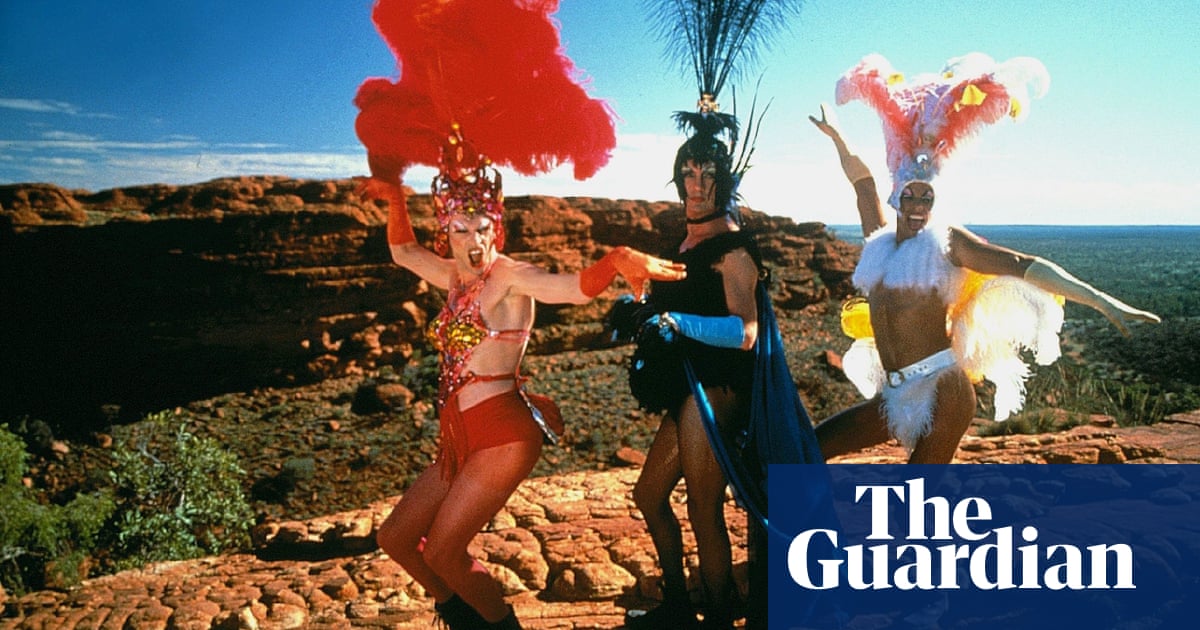Quentin Tarantino Reveals How Pedro Almodóvar’s NC-17 ‘Matador’ Inspired His Approach to Violence

Quentin Tarantino Reveals How Pedro Almodóvar’s NC-17 ‘Matador’ Inspired His Approach to Violence
Quentin Tarantino has always found irony between the sacred and the profane.
The Oscar-winning writer/director revealed in his new book “Cinema Speculation” that the downfall of American auteur filmmaking in the 1980s in part led him to look for new sources of inspiration, namely connecting with Pedro Almodóvar’s 1986 film, “Matador.”
The controversial NC-17-rated erotic thriller follows a student matador, played by Antonio Banderas, who confesses to a murder he did not commit, while finding pleasure in the pain of others. Almodóvar confirmed that the graphic opening sequence featured an unsimulated sex scene as well as a character masturbating to Mario Bava’s 1964 giallo slasher “Blood & Black Lace”; Almodóvar later admitted in his own book “Almodóvar on Almodóvar” that “Matador” was one of his weakest films. Yet it unlocked something in Tarantino.
“I remember when I worked at my Manhattan Beach video store, Video Archives, and talked to the other employees about the types of movies I wanted to make, and the things I wanted to do inside of those movies. And I would use the example of the opening of Almodovar’s ‘Matador,'” Tarantino wrote in “Cinema Speculation,” out now.
“And their response would be, ‘Quentin, they won’t let you do that,'” the “Once Upon a Time in Hollywood” director continued. “To which I replied back, ‘Who the fuck are “they” to stop me? “They” can go fuck themselves.'”
The “Pulp Fiction” writer/director further described the impact of “Matador” given the era.
“At the right age (mid-twenties), and at the right time (the fucking eighties), the fearlessness demonstrated by Pedro Almodóvar led by example,” Tarantino wrote. “As I watched my heroes, the American film mavericks of the seventies, knuckle under to a new way of doing business just to stay employed, Pedro’s fearlessness made a mockery of their calculated compromises. My dreams of movies always included a comic reaction to unpleasantness, similar to the connection that Almodovar’s films made between the unpleasant and the sensual.”
He added, “Sitting in a Beverly Hills art house cinema, watching Pedro’s vividly colorful, thrillingly provocative, 35mm images flickering on a giant wall — demonstrating that there could be something sexy about violence — I was convinced there was a place for me and my violent reveries in the modern cinematheque.”
Tarantino concluded, “Now I wasn’t a professional filmmaker back then. I was a brash know-it-all film geek. Yet, once I graduated to professional filmmaker, I never did let ‘they’ stop me. Viewers can accept my work or reject it. Deem it good, bad, or with indifference. But I’ve always approached my cinema with a fearlessness of the eventual outcome. A fearlessness that comes to me naturally — I mean, who cares, really? It’s only a movie.”
Related News & Content
-

Use wp.media templates to create totally custom modal
Use wp.media templates to create totally custom modal,Following up on this answer I'm trying to determine how to create a modal with completely unique menu items/content than the media modal. If you add a new state you can add a new menu tab and hav... Tags: media modal stackexchange.com WordPress Development Stack Exchange -

Get post by tag
Get post by tag,I want to get several post by tag. So I try to use get_posts() function: <?php $args = array( 'numberposts' => '3', 'post_status' => 'publish', 'tag' => 'travel' ); $ Tags: functions posts query posts stackexchange.com WordPress Development Stack Exchange -

Elementor + ACF: How to insert dynamic JSON-LD formatted code into ACF field without sanitizing the script tag?
Elementor + ACF: How to insert dynamic JSON-LD formatted code into ACF field without sanitizing the script tag?,On a normal website, I am able to add JSON-LD structured data, such as below, into a Elementor HTML widget, in a proper way. However, as soon as I insert JSON-LD format into an ACF field (Textarea)... Tags: advanced custom fields php stackexchange.com WordPress Development Stack Exchange -

Gutenberg InnerBlocks noallowedblocks on parent but allowedblock on Child
Gutenberg InnerBlocks noallowedblocks on parent but allowedblock on Child,This is a continuation of the following post: Custom Gutenberg block with nested InnerBlocks renderAppender not displaying add button I solved one problem but created a different problem. I'm recr... Tags: block editor plugin development stackexchange.com WordPress Development Stack Exchange -

Delay Issue: Using Wget with JSON Endpoint – Need Help Understanding Headers
Delay Issue: Using Wget with JSON Endpoint – Need Help Understanding Headers,On a WooCommerce website, I have a REST endpoint created with register_rest_route that returns a JSON response. To perform a routine with a certain frequency and urgency, I have added this instruct... Tags: rest api stackexchange.com WordPress Development Stack Exchange -

How do I change top header background color
How do I change top header background color,Please refer to website: https://virginiafrank.com I cannot get the top header background color (or phone numbers) to change color. I would prefer the background gold and text black. I can't make t... Tags: headers stackexchange.com WordPress Development Stack Exchange -

How to display the_tags() as plain text
How to display the_tags() as plain text,the_tags by default is displaying as URL. I need to display it as plain text to insert inside HTML attribute. <?php $tag = the_tags(''); ?> <div class="image-portfolio" data-section... Tags: stackexchange.com tags WordPress Development Stack Exchange -

Give to site admin the option to "skip confirmation email" when adding new user
Give to site admin the option to "skip confirmation email" when adding new user,in wordpress multisite when we give to site admin the option to add new users, site admin dont have the "checkbox" to add the new user without sending the user email with link activation (see the Tags: email verification multisite stackexchange.com users WordPress Development Stack Exchange -
Facing Hamas and Tehran, Israel is left with only vengeful madness | Opinion
Facing Hamas and Tehran, Israel is left with only vengeful madness | Opinion,Despite the Terrible Disaster on October 7, and the Failures It Exposed, Israel Is Still Convinced That the Image of the Mad Man Will Ensure Its Security -

Carol Kirkwood stuns in figure-hugging dress amid BBC Breakfast technical chaos
Carol Kirkwood stuns in figure-hugging dress amid BBC Breakfast technical chaos,CAROL Kirkwood stunned in a figure-hugging dress amid a technical blunder. BBC Breakfast was flung into chaos this morning after a string of sound issues. However Carol, 61, was all smiles as she p… Tags: BBC BBC Breakfast BBC ONE Carol Kirkwood mirror.co.uk The Scottish Sun TV News TV UK daytime TV -

Families ‘to sue prison’ where loud inmates ‘terrorise kids’ with screaming
Families 'to sue prison' where loud inmates 'terrorise kids' with screaming,Residents living next door to a new prison who say their kids have to sleep wearing headphones and some leave during weekends due to the racket are threatening to sue the prison service Tags: mirror.co.uk Neighbours from hell prisons Scottish government The Mirror -

Doctor Strange’s Secret Wars Role May Be More Important Than You Thought – Looper
Doctor Strange's Secret Wars Role May Be More Important Than You Thought - Looper,According to entertainment leaker Alex Perez, Doctor Strange will find himself confronting his inner struggles as he headlines "Avengers: Secret Wars." Tags: Fiction Looper looper.com Marvel Cinematic Universe Science Star Wars The Universal Monsters franchise -
Are Katie Maloney and Tori Keeth Officially Dating?
Are Katie Maloney and Tori Keeth Officially Dating?,Is Vanderpump Rules star Katie Maloney officially dating Scheana Shay's "nanny" Tori Keeth after her tryst with Tom Schwartz? Tags: guitar.com Reality News Reality Tea -

Blondshell and Bully Team Up For New Single “Docket”
Blondshell and Bully Team Up For New Single “Docket”,Blondshell has teamed up with Alicia Bognanno of Bully for the newly released single "Docket." Listen to the track here. Tags: Keycat Keytags pastemagazine.com -

Priscilla, Queen of the Desert sequel in works with original cast, director confirms
Priscilla, Queen of the Desert sequel in works with original cast, director confirms,Stephan Elliott says Hugo Weaving, Guy Pearce and Terence Stamp are ‘onboard’ and the sequel will be set partly in Australia but will also head overseas Tags: Australian film Culture Film guy pearce Hugo Weaving Queen of the Desert Terence Stamp The Adventures of Priscilla the Guardian theguardian.com -

‘He could create beauty out of horror’: the extraordinary life and photography of Tim Hetherington
‘He could create beauty out of horror’: the extraordinary life and photography of Tim Hetherington,He joined rebel convoys in Africa and turned his time with GIs in Afghanistan into an Oscar-nominated film. But his subject wasn’t war – it was people. Ahead of a major show, our writer remembers his former colleague Tags: Afghanistan Africa Art and design Culture Exhibitions Imperial War Museums Libya Middle East and north Africa Newspapers & magazines Photography The Big Issue the Guardian theguardian.com Tim Hetherington War reporting World News -
IndusInd Bank Shares Rise 5% Today; Should Investors Buy, Sell or Hold the Bank Stock?
IndusInd Bank Shares Rise 5% Today; Should Investors Buy, Sell or Hold the Bank Stock?,IndusInd Bank shares rallied on May 8 after brokerages reaffirmed their faith in the private lender following a selloff on May 5 Tags: banking shares IndusInd Bank IndusInd Bank Shares IndusInd Bank Shares to Buy Markets News18 news18.com Stocks to buy -
House Of Crores: Sales Of Luxury Flats Jump 2.5 Times Across 7 Cities In March Qtr, Says Report
House Of Crores: Sales Of Luxury Flats Jump 2.5 Times Across 7 Cities In March Qtr, Says Report,Sales of luxury apartments in Chennai rose five times to 250 units in January-March 2023 from 50 units in the corresponding period a year ago.\r\n\r\n Tags: BUSINESS luxury flats in mumbai luxury real estate luxury real estate india luxury real estate market luxury real estate market in india luxury real estate mumbai luxury rental market News18 news18.com real estate
Warning: file_get_contents(https://www.scienceradars.com/wp-output-content.php?pg=1&cat=&kw=&lvl=): Failed to open stream: HTTP request failed! HTTP/1.1 526 in /home/wwwroot/xuenou.com/wp-content/themes/chromenews/template-parts/content.php on line 169
Warning: file_get_contents(https://www.bayuexiang.com/wp-output-content.php?pg=1&cat=&kw=&lvl=): Failed to open stream: HTTP request failed! HTTP/1.1 526 in /home/wwwroot/xuenou.com/wp-content/themes/chromenews/template-parts/content.php on line 173
TrendRadars
The Most Interesting Articles, Mysteries and Discoveries

Giannis Antetokounmpo Sets Record For Most Games Played In Bucks Franchise History!

NLE Choppa Affected By Ja Morant's Issues As Powerade Ad Is Pulled

When Is The Next Pet Simulator 99 Update? – Release Date & Time
How Irdai's Decision To Stop Loan Re-payment Via Credit Card Is Good? Here's What Insurers Say


















































